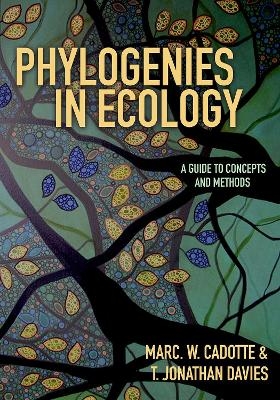
Phylogenies in Ecology
Princeton University Press (Verlag)
978-0-691-15768-9 (ISBN)
Showing how phylogenetic methods are shedding light on fundamental ecological questions related to species coexistence, conservation, and global change, Phylogenies in Ecology will interest anyone who thinks that evolution might be important in their data.
Marc W. Cadotte is associate professor of biology at the University of Toronto, Scarborough. T. Jonathan Davies is assistant professor of biology at McGill University.
Preface ix CHAPTER 1 An Entangled Bank: Evolutionary Relationships and Ecological Patterns 1 1.1. Systematics and the Diversity of Life 2 1.2. The Origins 3 1.3. "Correcting" Ecological Comparisons 6 1.4. The Emergence of Ecophylogenetics 7 1.5. The Goal of This Book 8 CHAPTER 2 Building and Using Phylogenies 10 2.1. Handling Phylogenies in R 11 2.2. Building Trees 19 2.3. Finding and Adapting Available Trees 31 2.4. Tree Scaling and Rate Smoothing 33 2.5. Conclusion 40 CHAPTER 3 Phylogenetic Patterns within Communities: Inferring Mechanisms of Ecological Assembly Using Phylogenetic Distances 41 3.1. Phylogenetic Distances and Community Assembly 44 3.2. Calculating Community Diversity Metrics 55 3.3. A Note about Phylodiversity Measures-Moving from the Causes to the Consequences of Diversity 65 3.4. Conclusion 66 CHAPTER 4 Randomizations, Null Distributions, and Hypothesis Testing 67 4.1. A Brief History of Randomization Tests in Ecology (or the Simberloffian Shift in Ecology) 72 4.2. How to Build Null Communities 76 4.3. Randomizing Phylogenetic Data 83 4.4. Taking the Pool Seriously 96 4.5. Conclusion 99 CHAPTER 5 Detecting Patterns of Trait Evolution 100 5.1. Phylogenetic Signal 101 5.2. Alternative Models of Trait Evolution 108 5.3. Reconstructing Ancestral States 115 5.4. Conclusion 120 CHAPTER 6 The Geography of Speciation and Character Displacement 121 6.1. Character Divergence and Geographic Overlap 122 6.2. Community-Wide Trait Dispersion 133 6.3. Conclusion 141 CHAPTER 7 Phylogenetic Diversity across Space and Time 143 7.1. Phylobetadiversity: Measuring Phylogenetic Turnover 145 7.2. The Influence of Spatial Scale on Phylogenetic Patterns 161 7.3. Conclusion 170 CHAPTER 8 Speciation, Extinction, and the Distribution of Phylogenetic Diversity 172 8.1. Conservation of the Tree of Life 172 8.2. Macroevolution: Diversification 181 8.3. Conclusion 194 CHAPTER 9 Using Phylogenetic Information to Make Better Conservation Decisions 196 9.1. Why Preserve Evolutionary History? 197 9.2. Quantifying Evolutionary History 201 9.3. Prioritizing Species Based on Evolutionary Distinctiveness 204 9.4. Prioritizing Hotspots of Evolutionary Distinctiveness 207 9.5. Applying Conservation Metrics 208 CHAPTER 10 Conclusion: Where To From Here? 209 10.1. Predicting Ecology from Evolutionary Patterns 210 10.2. Combining Trait and Phylogenetic Information 212 10.3. Phylogenetic Insights into a Changing World 213 10.4. Where To Go from Here? 216 10.5. Heralding the Ecology-Evolution Synthesis? 221 Glossary 223 References 225 Index 249
| Erscheinungsdatum | 22.08.2016 |
|---|---|
| Zusatzinfo | 100 line illus. |
| Verlagsort | New Jersey |
| Sprache | englisch |
| Maße | 178 x 254 mm |
| Gewicht | 709 g |
| Themenwelt | Naturwissenschaften ► Biologie ► Evolution |
| Naturwissenschaften ► Biologie ► Ökologie / Naturschutz | |
| ISBN-10 | 0-691-15768-5 / 0691157685 |
| ISBN-13 | 978-0-691-15768-9 / 9780691157689 |
| Zustand | Neuware |
| Informationen gemäß Produktsicherheitsverordnung (GPSR) | |
| Haben Sie eine Frage zum Produkt? |
aus dem Bereich


